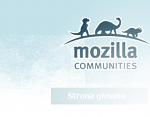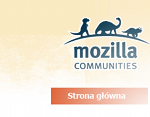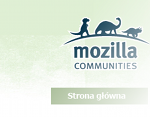Over the years of traveling around the world to evangelize about Open Web and explaining the position and role Mozilla holds, I’ve encountered an interesting phenomena that I tried to put into a social context for quite some time.
My last trip to China, where I had met with Mozilla community in Shanghai triggered me to write about it, so here it comes.
The Web
The Web is a virtual plane on which human interact. It’s an incredible and amazing plane which breaks a vast number of physical laws and, in consequence, economical laws, biological laws, psychological laws, and, maybe in a most profound way, social laws.
From the social perspective, the web changes everything because it holds an unprecedented characteristic:
The Web almost fully neutralize three basic physical dimensions in which humans operate, and, if that was not enough, it also severely limits the fourth one – time!
Think about it for a moment, please. Isn’t it mind blowing that we’re here, now, as it happens?
Spatial dimensions
Things on the Web are equally “close” to each Web user and the “dimension” that is closest to replace spatial distance – connection speed – is just a temporary factor that is disappearing over the course of a few years becoming ignorable itself.
It may not be the first invention that reduces the eternal impact of spatial dimensions on human life – cars, planes, mail, they all contributed to the sense of the world getting smaller, but the Web just cut it off entirely. You have access to this text from each place on Earth at the very same moment and you can build meaningful connections with everyone on the planet using the same techniques we use to build connections with our neighbors.
The laws of physical proximity and its impact on our social life is being transferred onto the Web and suddenly everyone is socially close to everyone else.
Time
Similar shift happens with the fourth dimension. With mobiles devices, laptops, SMS, video chats, forums, and push&pull notification systems we’ve not only overcame physical distance limitations but we also built a plethora of technologies to store, in a lossless mode, every data byte transferred between human beings. Every piece of communication. Every smile, every word, every information, story or emotion that we manage to encode into any of the digital communication channels may be stored, multiplied, transformed and replayed forever.
Once again, the Web is not the first medium to do it, books, photographs, CD’s, vinyl and cameras where there before, but the Web brought it to the next level. Everything that manages to fit the web can be ripped of action-time limitation. It doesn’t matter when it happens, and how far did it happen. I can record my fingers typing this text and broadcast them to everyone around the world plus let anyone interested watch it in 100 years. All this interesting social/cultural/memetic implications about your daughter reading your blog posts from when you were sixteen kick in!
And the price limes is zero! It costs almost nothing and it will cost less and less! (making economy laws not fit anymore).
Physical vs. virtual
Hola, hola! – as many of my spanish fluent friends would say – but that’s all virtual. Yes, we removed spatial and time dimensions but only from information. Nothing changes in the realm of physical objects. No teleportation, no time travels, right? Right!





